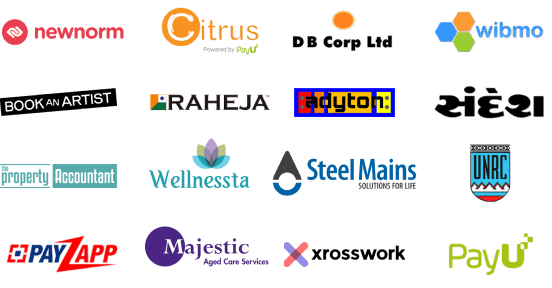Black Friday isn’t just a sales event — it’s a race against time, traffic, and competition. While every brand launches discounts and ad campaigns, only a few manage to turn the chaos into consistent revenue.
The secret? AI-powered sales automation tools.
In this blog, we’ll show you how to use AI automation to double your Black Friday sales, save your team hours of manual work, and deliver a seamless customer experience — whether you’re a marketer, Shopify seller, or eCommerce brand owner.
🚀 Why Black Friday Is No Longer a “Human-Only” Game
Every second counts during Black Friday. The surge of traffic, abandoned carts, delayed responses, and stock issues can break your conversion funnel faster than you can refresh your analytics dashboard.
- 80% of Black Friday shoppers expect instant replies.
- 70% of abandoned carts result from slow checkout or delayed follow-ups.
- Brands using AI automation report up to 2x higher sales compared to manual operations.
That’s why top-performing eCommerce brands and marketing teams are now leveraging AI-driven workflows — to handle everything from lead capture to post-sale engagement automatically.
🧠 What Is AI Sales Automation?
AI sales automation uses intelligent technology to manage repetitive yet critical sales tasks — such as lead scoring, customer segmentation, follow-ups, and personalized product recommendations.
Instead of spending hours manually tracking leads or sending individual messages, your team can focus on strategic growth while automation handles the heavy lifting in the background.
During Black Friday — when response speed and timing can make or break a sale — AI-powered automation becomes a true game-changer. It helps you:
- Recover abandoned carts automatically with timely follow-up emails.
- Deliver personalized product suggestions based on browsing and purchase behavior.
- Trigger discounts dynamically depending on shopper actions.
- Analyze data in real time to identify which campaigns and products perform best.
At iTechNotion, we design and integrate custom AI automation workflows tailored for eCommerce and SaaS businesses. Our solutions connect your marketing, sales, and customer service systems into one intelligent ecosystem — helping you maximize efficiency and conversions this Black Friday.
💰 How AI Tools Can Double Your Black Friday Sales
When it comes to Black Friday, timing, personalization, and precision are everything — and that’s exactly where AI tools shine. Let’s explore how artificial intelligence can help you turn browsers into buyers faster than ever.
1. Smart Product Recommendations That Drive Conversions
AI analyzes browsing patterns, purchase history, and real-time user behavior to showcase the most relevant products to every visitor. During high-traffic periods like Black Friday, personalized recommendations can increase average order value (AOV) by up to 35%.
For instance, brands using Itechnotion’s custom recommendation engine have experienced significantly higher conversion rates during previous sale seasons.
2. Automated Cart Recovery That Saves Every Sale
Cart abandonment is inevitable — but it doesn’t have to mean lost revenue. AI-powered recovery systems automatically send personalized reminders or incentive-driven follow-ups to bring shoppers back before they lose interest.
Pro Tip: Combine smart timing with emotional triggers like “Your deal is about to expire” to create urgency and see a noticeable uplift in conversions.
3. Conversational AI That Converts
During peak hours, handling customer queries can be overwhelming — that’s where conversational AI comes in. iTechNotion custom-built AI chatbots can instantly manage FAQs, order updates, and product recommendations — guiding visitors toward checkout without human delay.
This not only reduces bounce rates but also improves customer satisfaction and retention during the busiest shopping hours.
4. Predictive Analytics for Smarter Ad Spending
AI helps marketers make data-driven decisions before, during, and after Black Friday. By analyzing historical performance and audience behavior, predictive algorithms identify which campaigns, audiences, and channels are most profitable.
At iTechNotion, our AI-powered dashboards visualize ROI and performance metrics in real time — allowing brands to allocate ad budgets more efficiently and confidently.
5. AI-Driven Email & SMS Automation That Cuts Through the Noise
During Black Friday, inboxes are flooded with promotions — but personalization still wins. AI-powered automation ensures that your messages reach the right audience at the right time, based on each customer’s preferences and purchase behavior.
Using Inboxpl.us, brands can set up intelligent workflows that automatically send follow-ups, product reminders, and personalized offers that feel genuinely human.
The result? Higher open rates, better engagement, and stronger customer relationships — even during the busiest sales weekend of the year.
⚠️ Common Mistakes Brands Make During Black Friday (and How AI Fixes Them)
Even experienced marketers can lose thousands during Black Friday — not because of poor products, but because of inefficient processes. AI automation eliminates these bottlenecks and turns chaos into opportunity.
1. Delayed Responses and Missed Opportunities
During peak hours, inboxes and chats can overflow. Delayed replies often mean missed sales. AI-powered assistants ensure every customer gets an instant response, keeping your sales momentum alive throughout the rush.
2. One-Size-Fits-All Discounts
Generic discounts no longer impress customers. AI segments your audience based on behavior and delivers tailored offers that feel personal — boosting conversions and reducing unnecessary markdowns.
3. Late Abandoned Cart Follow-Ups
Timing is everything. Waiting too long to remind customers about their abandoned carts means losing them to competitors. AI triggers follow-ups at the perfect moment, creating a timely nudge that brings shoppers back to complete their purchase.
4. Data Overload and Poor Insights
Black Friday floods teams with data — but not all of it matters. AI-powered analytics cut through the noise, highlighting what truly drives ROI so your team can pivot in real time.
5. Overwhelmed Teams and Manual Bottlenecks
Manual operations during peak sales can drain your team’s energy. Automation takes care of repetitive workflows, allowing your marketers to focus on creativity, strategy, and customer engagement — where human touch matters most.
In short, AI doesn’t just simplify Black Friday — it helps you capture every opportunity your competitors might miss.
How to Get Started with AI Automation (Before Black Friday)
If you’re still running your sales and marketing manually, now’s the perfect time to make the switch. Black Friday moves fast — and automation helps your team stay ahead. Here’s a simple 4-step plan to get started:
- Audit Your Sales Funnel: Identify problem areas like slow cart recovery, repetitive follow-ups, or missed customer queries.
- Build Your AI Stack with the Right Tools: Integrate automation that complements your workflow. Whether it’s personalized messaging, product recommendations, or predictive insights, iTechNotion connects the right AI tools to achieve your business goals seamlessly.
- Automate, Test, and Refine: Set up your workflows early and run A/B tests before the Black Friday rush. Adjust triggers, messaging, and timing to ensure smooth performance when traffic peaks.
- Monitor and Optimize in Real Time: Use AI-powered analytics dashboards to track conversions, engagement, and ROI. With real-time insights, your team can make quick, data-backed decisions that maximize impact.
Final Thoughts: Turn Black Friday Into Your Smartest Sales Event Ever
Black Friday doesn’t reward the biggest discounts — it rewards the smartest systems. AI automation helps you sell more, faster, and with less stress — whether you’re a solo entrepreneur or a scaling eCommerce brand.
Don’t wait until Black Friday hits. Start building your AI sales engine today with iTechNotion automation experts and get ready to double your conversions this holiday season.





